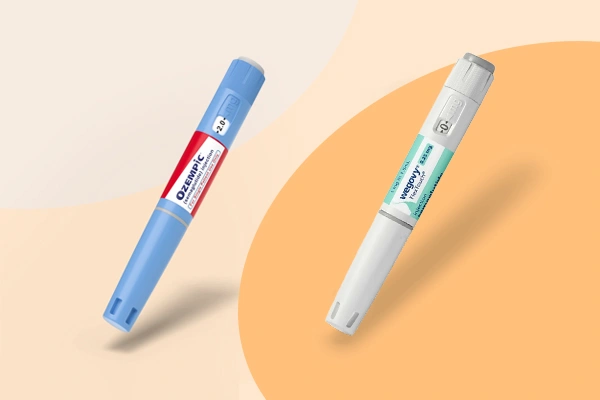Does Getting an IV Hurt? What You Need to Know Before Your Next Drip
Worried about IV pain? Here’s what to expect:
- Insertion: A quick pinch, similar to a shot, but usually brief.
- During the Drip: Minimal discomfort—mostly a cool sensation or slight pressure.
- Pain Management: Stay hydrated, apply heat beforehand, and ask about numbing cream.
- Aftercare: Mild soreness is normal, but persistent pain, swelling, or redness may signal a problem.
While IV insertion may cause brief discomfort, a properly placed IV shouldn’t hurt. If you experience lasting pain, notify your healthcare provider.
One of the most common medical procedures is intravenous therapy—introduction of fluids, medications, or nutrients into a person’s bloodstream. The procedure is part of routine treatment for so many, yet one of the questions always posed by patients has to do with the potential pain and discomfort of having an IV. Understanding the sensations involved, whether IV hurts, and how to manage IV pain can help alleviate anxiety and improve the overall experience.
This article will delineate the various areas for IV insertion and its maintenance, what one could feel during the procedure, does IV really hurt, how to minimize discomfort, and what actions to take if pain happens afterward. We also have an article about potential side effects of IV therapy in Elegant Hoopoe website.

Sensation During IV Insertion
Many people report that IV drips hurt almost as much as getting a shot or injection. This is because a very small needle pierces the skin and then enters a vein. For most people, this is not very uncomfortable and the discomfort only lasts a few seconds. Typically, the needle used to insert an IV is finer than the needle used for simple injections, which may help reduce initial trauma.
Once an IV catheter is inserted, the needle is removed, leaving only the flexible catheter in the vein, and this should not be painful. Discomfort at the time of IV insertion can vary from person to person due to pain threshold, understanding of the health professional, or which vein was accessed. Others may find it more profound because of the sensitivity on the skin or the location of that particular vein.
While others with veins located in more sensitive areas, like the wrist or the hand, may also cause more discomfort. For those considering regular IV therapy, understanding How often should you get IV therapy is crucial for maintaining balance and optimizing benefits; this will be explored comprehensively in the article.
[cta_blogs type=’iv’]
Pain and Discomfort During the IV Drip
You shouldn’t be worried whether IV therapies hurt or not. Once it is put correctly and the drip starts flowing, then most of the pain goes away. If it were placed properly, then the IV itself should not be painful if it was put by a professional. You might feel a cold sensation or feel light pressure from the fluids or medication being administered through the veins, but generally, it wouldn’t cause discomfort, although it could be likened to something similar to the insertion itself.
This can occasionally cause discomfort at the insertion site or a feeling of fullness. This could be due to the catheter itself and/or flow of fluids. If the IV is well secured to the patient and working correctly, this should not cause a huge amount of discomfort. However, if you have persistent pain, swelling, or redness around the IV site, then it may be a sign of a problem that needs attention. Additionally, the effectiveness of IV therapy for treating cold symptoms and its potential benefits will be discussed to provide a clearer understanding of its role in such situations.
Managing and Reducing Pain

If you are concerned about the pain of having an IV inserted, there are several ways to reduce your sense of discomfort:
- Speak with your doctor if the pain is causing you any concern: They can reassure you and use techniques to lessen the discomfort of the implantation.
- Water, Water and More Water: Drinking an abundance of water before going to your procedure can cause the veins in your arms to plump up thus making it easier for them ding that vein with a needle and insert the IV.
- Select: Not all veins are equally easy to get into. Let your healthcare provider know which veins have been good for IVs in the past.
- Use a Heat Pack: Applying some heat to the area before inserting can dilate the vein and really help lessen any pain you feel.
- Remain Calm: Do your best to stay relaxed during the process. Coloring, working on relaxing crafts or practicing deep breathing/counting exhales over songs helps with anxiety and general discomfort.
- Topical Anesthesia — Inquire about topical numbing cream or spray to numb the skin prior to insertion.
- Keep Busy Keep Yourself Pre-Occupied Speak to your friends or watch a video, so as you are not bothered inquisitively about the insertion of the needle.
- Avoid Moving the Area: After the IV is inserted, not moving your arm around can help reduce any extra pain or irritation.
Related Article: Best IV Drip Dubai
Addressing Pain After IV Insertion

While the insertion of an IV may cause some initial discomfort, ongoing pain or issues at the IV site could indicate complications. Here are some potential causes and treatments for pain after IV insertion:
- It can be caused by the IV catheter if it is irritating, or from being administered with fluids. Symptoms are followed by the pain, redness of skin along with swelling and warmth at insertion site. For phlebitis: apply a warm compress to the area and consider over-the-counter pain relievers Before using your salve, more cautiously, remember to check with a healthcare professional if you get the same or worsen.
- Infiltration: This happens if IV fluids spill into surrounding tissues instead of staying inside the vein. This leads to swelling, pain and tissue damage. Raise the injured arm and keep a cold compress on it to prevent swelling and pain. If you think the IV has infiltrated, notify your healthcare provider right away as an IV restart may be needed.
- Nerve Injury: An IV catheter may cause nerve damage near the area of insertion and result in pain; numbness, or tingling. If you have persistent or extreme symptoms, seek medical attention to receive an evaluation of your nerve function and proper treatment recommendations.
- Bruising: Bruising is a typical result of getting an IV and occurs wherever the needle has been inserted, which can be rather sensitive such as in the case of wrists. Cool the affected area using a cold compress to decrease swelling and comfort. They usually go away in a week or two.
- Allergic Reaction: Very uncommon (uncommon indicates more than 1 in 1000 people but less than one out of a thousand having the effect) to be allergic, either due the IV catheter or any fluids that can run into this venous access. You may also experience other symptoms such as pain, redness, and itchiness. If you think that you are experiencing an allergic reaction, tell your medical provider now so they can take out the IV and give treatment.
Does an IV hurt: Conclusion
Although inserting the IV may be uncomfortable, as a whole, a properly performed IV procedure does not hurt. Most people report very little to no pain from the IV drip themselves. Management and reduction strategies, keeping hydrated, heat, and distractive behaviors, are things that do work. In case of too much pain or complications, one should communicate fast and inform the healthcare provider that the IV hurts so that they can help solve these issues. Knowing what to expect and by taking a few precautions beforehand, you can make the IV experience as comfortable as possible and concentrate on reaping benefits for the treatments that one is going to have.






